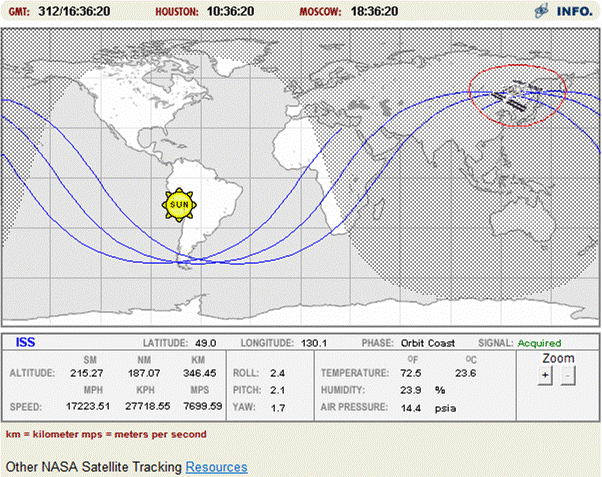Model: [Uniform Circular Motion].
Approach: We know from the Law of Interaction that the acceleration experienced by the ISS must satisfy:
{latex}\begin{large}\[ a = \frac{v^{2}}{r} \] \end{large}{latex}
We know that _v_ = 7699.59 m/s, but _r_ requires some thought. The altitude of 346450 m is not the full radius of the orbit, it is only the height of the ISS above the surface of the earth. To find the full orbital radius, we must add on the earth's radius. The earth's radius can be found on the web or in a number of books to be _R_~e~ = 6,380,000 m. Thus, the orbital radius is _r_ = 6,730,000 m. With this determined, we find:
{latex}\begin{large} \[ a = \mbox{8.81 m/s}^{2} \] \end{large}{latex}
{note}Earth's gravity is *not* insignificant at level of the ISS's orbit. If it was, the ISS would just fly off into space!{note}
| 